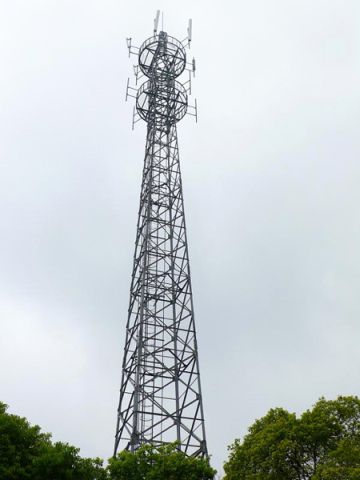 By now we take communication towers for granted but 15 years ago they were far less common.
By now we take communication towers for granted but 15 years ago they were far less common.
It didn’t take long after towers dotted the landscape to find out they were deadly for birds, especially along migration corridors like the Gulf Coast, but the Federal Communications Commission (FCC) refused to consult US Fish & Wildlife about potential wildlife impacts and would not notify the public before they permitted new towers.
After many petitions the American Bird Conservancy and Earthjustice sued the FCC for violating federal law by approving dozens of new towers every year with little or no environmental review.
In February 2008 a federal appeals court ruled on the lawsuit and ordered the FCC to change course. They’re now required to conduct careful environmental impact studies and hold public comment periods before approving potentially deadly towers.
Fast forward to 2010. The FCC wants to increase wireless broadband services. (Their plan includes killing off 40% of over-the-air television spectrum — very upsetting to us broadcasters!) More wireless service means new towers and changes to existing towers. Though the wireless industry does not formally agree that towers kill birds, the upcoming flurry of tower activity brought both sides to the table.
The wireless infrastructure coalition and three bird conservation groups (American Bird Conservancy, Defenders of Wildlife and the National Audubon Society) negotiated interim standards for the FCC to use when permitting communication towers. They sent their Memorandum of Understanding to the FCC in May.
The proposed rules will expedite the approval of bird friendly towers while requiring lengthy evaluations and reviews of new or changed equipment that’s likely to kill birds.
So, what is a “bird friendly” tower? It’s a tower that’s not tall (it’s under 350 feet), has no guy wires and is lit with a white strobe instead of non-blinking red lights.
Steady red lights confuse birds because they use the sunset’s red wavelengths to navigate during nighttime migration. Birds keep the red glow of sunset on one side of their faces to make sure they’re heading the right direction. When they encounter a tall tower in nighttime fog, the steady red lights look like their navigational cue so they fly around and around the tower, hitting the guy wires or falling exhausted to the ground. This is especially deadly at the Gulf Coast in spring when northbound migrants expect to make landfall but instead exhaust themselves circling the towers. Five to 50 million birds die this way every year depending on the weather.
The proposed interim standards, when adopted by the FCC, will go a long way toward reducing bird deaths. New towers over 450 feet tall will always require an environmental assement and prior public notice. Even changes to lighting systems from a more-preferred (bird-friendly) option to a less preferred option will require a public comment period and our comments (yes, we’re the public) may cause the FCC to determine that an environmental assessment is needed.
I’m looking forward to the interim standards. We — and the birds — won’t see so much red anymore.
(photo from Zhejiang Shengda Group, a communications tower manufacturer in China)
I think I have seen some strobe lights on towers may be down near Jefferson Hospital. Didnt know what I was seeing for a few min. in looking out a window & realized what it was & didn’t realize it was a “good thing”. I never realized it was the red lights that were a danger & worried more about the height. Everybody has to be aware of everyone & everything around us always. Thanks for this wonderful information.